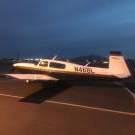Minnesota Crash
-
Members Online
- MikeOH
- 802flyer
- kevinw
- Zippy_Bird
- Stubby
- Bike_rider
- wombat
- 00-Negative
- Kelpro999
- hubcap
- toto
- 1st mooney
- Ryan ORL
- FlyWalt
- kortopates
- mike_elliott
- ArtVandelay
- M20E for me
- Boboli
- Shadrach
- TCC
- Jim Peace
- chrisburdzy98
- cferr59
- Kesk
- lamont337
- acekng1
- Justin Schmidt
- Rsmithref
- ajudson
- 1980Mooney
- kalleh
- flyinjake
- EricJ


Recommended Posts
Join the conversation
You can post now and register later. If you have an account, sign in now to post with your account.